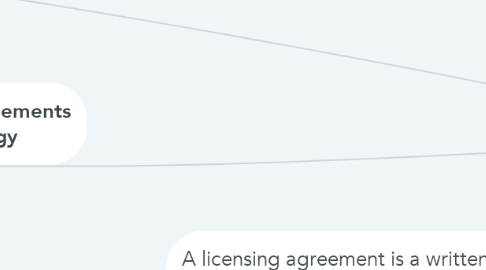Software Piracy and Copyright
by Adam Le-Serve

1. Rights that come with copyright are: • to reproduce the copyrighted work. • to make derivative works (e.g. a movie from a novel). • to distribute copyrighted works to the public. • to perform certain works in public (e.g. music). • to display certain works in public (e.g. paintings).
2. A licensing agreement is a written contract between two individuals or groups, in which a property owner permits another individual/group to use that property under a specific set of parameters or conditions
3. Licensing Agreements and Terminology
3.1. - A licence is a formal permission that gives use to the program
3.1.1. A licensing agreement is a written contract between two individuals or groups, in which a property owner permits another individual/group to use that property under a specific set of parameters or conditions
4. Copyright Laws
4.1. In place to safeguard the legal intellectual property rights of authors of any original works. The Copyright Act 1968 is the main legislation in Australia.
4.2. The types of things that are entitled to be copyrighted include software, graphics, audio etc..
4.2.1. The law, as it currently stands, assumes copyright exists unless the author has explicitly stated that a work is not under copyright.
4.3. In general the copyright owner is the author/creator/maker of the work in question. However a work created in the context of employment is owned by the employer. A work created by a contractor is owned by the contractor. However it is possible to vary these provisions by agreement. The Act does not require the completion of formalities (such as publication, registration or the payment of fees) in order to obtain protection in Australia, or any other country which is also a party to an international copyright treaty. Copyright protection is granted - Australian Copyright Act.
5. Classification of software in terms of copyright
5.1. There are four terms when classifying software in terms of copyright, these include: - Commercial _ Open source - Shareware - Public Domain Commercial software refers to any software that is purchased from software publishers, stores, retailers or other software distributors. Open source software is software where the source code is create collaboratively and anyone is able to modify it. Shareware is software that requires a license to use and you do not own it. Distributing shareware software is pretty much a form of marketing, where the people that have purchased the software become the distributors. Public domain software is any software where the copyrights holder relinquishes all the rights to the software.
6. Piracy
6.1. Piracy is the illegal copying and using of software. Individuals commit piracy when they illegally download and install software without paying a fee or royalty. High speed networks and fast downloads have allowed the proliferation of piracy.
6.2. Dont be a pirate it is naughty
7. Ownership Versus Licensing
7.1. When you purchase a software product, you do not own the product itself, nor an individual copy. By purchasing a product and "agreeing" to the licence agreement, you gain rights to access and use a product. This means that your rights to the product can be revoked, and the owner of the product has no liability to keep the product released or update it. However, this must comply with contracts, laws and with the other agreements.
7.2. Typically, the owner of a software product is the creator. Unless you work for the Department of Education - or have a contract with another company or organisation.
8. Plagiarism
8.1. Plagiarism is someone stealing or imitating someone else's ideas and manner of saying them and then claiming it as their own. if someone took someones work and then claimed it as their own it would be plagiarism. An example of plagiarism is say you are doing a project and you find the exact project online and then hand it in as your own work that is plagiarism. In terms of software it is less clear as many people are involved, often code is modified to suit the new task. The main point with software is everyone needs to acknowledge their work and any work attained from other sources can never be claimed as their own.


